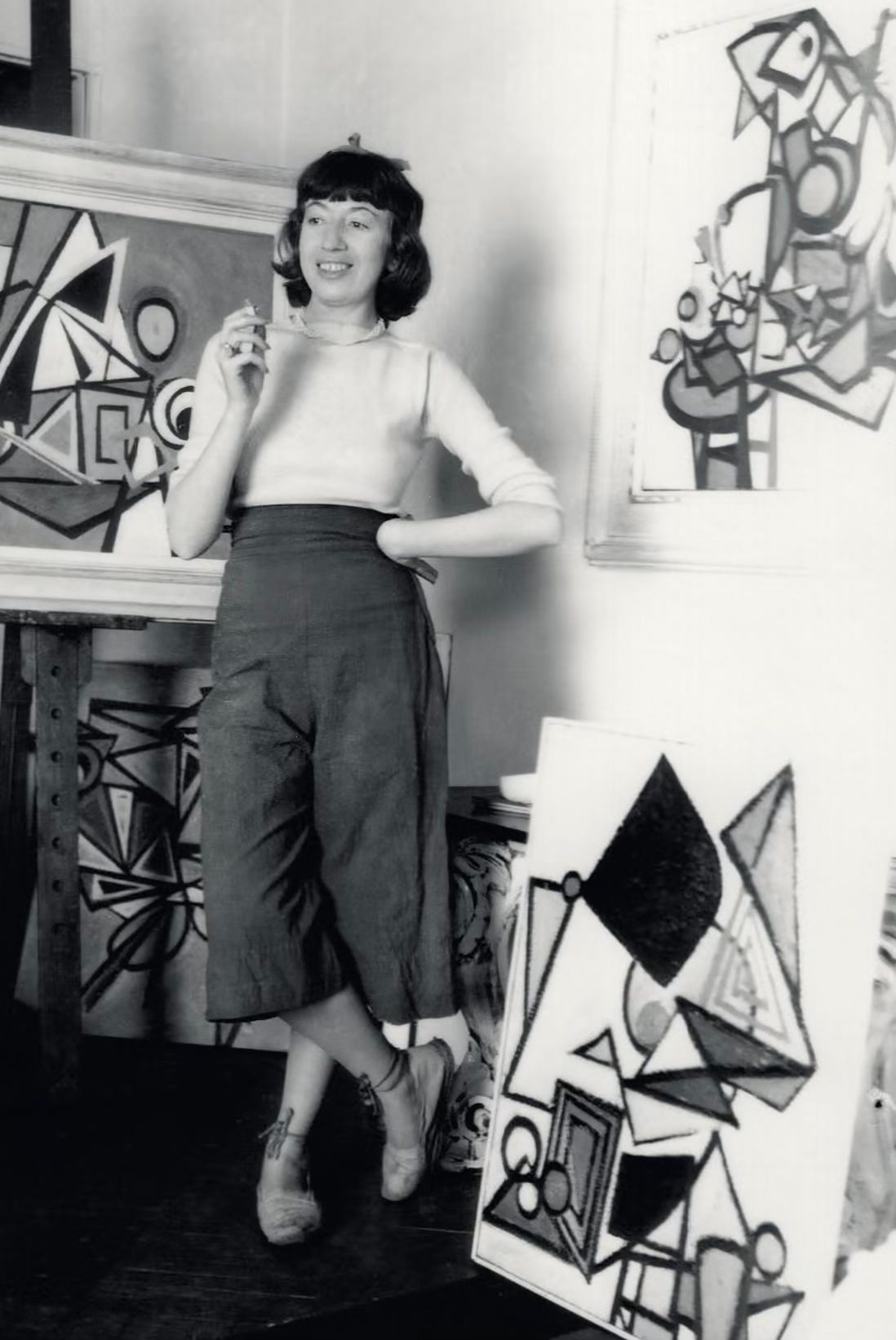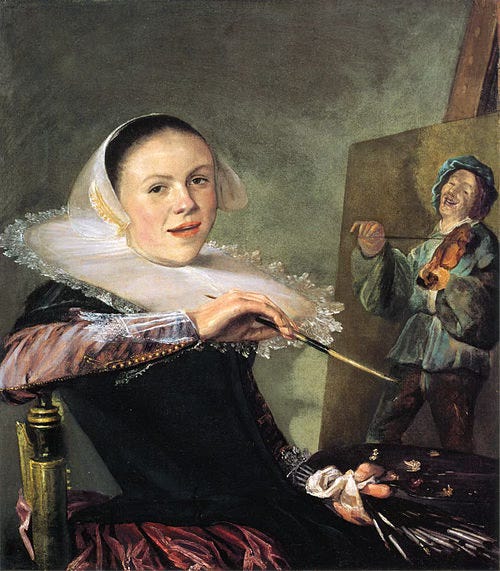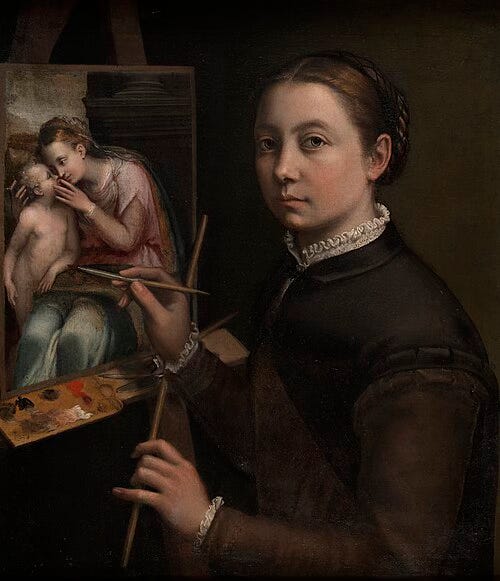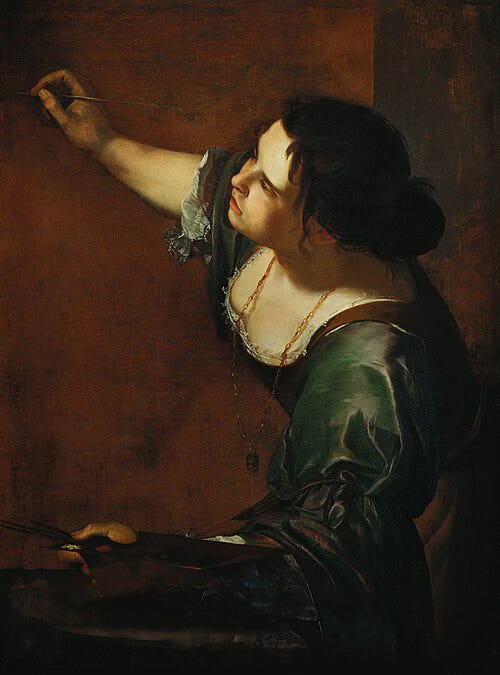The Forgotten Wives of Famous Men
A reclamation of muses, co-creators, and visionaries who were devoured by the men they made immortal.
Behind every great man is a great woman,” they say. But when the man is an artist, the woman is rarely allowed to stand in frame. She is the hand behind the brush, the body collapsed in a studio corner, the whisper of a line erased from the final signature.
This article is not about muses. Muses are passive. The women in these stories were workers, innovators, co-authors, and often, sacrifices. Some died in anonymity. Some died in asylums. Others had their entire life’s work signed over to male counterparts. All of them deserve a reckoning. This is their reclamation.
Camille Claudel: Sculpting Her Own Madness
Camille Claudel was far more than Auguste Rodin’s pupil or mistress, she was his peer. A brilliant sculptor in her own right, Claudel’s works such as The Waltz and The Mature Age pulsate with emotional depth and technical mastery. But when her relationship with Rodin soured, the art world sided with him.
Institutionalized for the last 30 years of her life, her letters from the asylum speak of betrayal and paranoia. Yet, when revisited through a feminist lens, they resemble the cries of a woman crushed by the dual weights of genius and misogyny. Her legacy, long overshadowed, now rightfully returns to center stage.

Artemisia Gentileschi: The Baroque Survivor Who Painted Her Own Justice
Born in Rome in 1593, Artemisia Gentileschi was the first woman admitted to the Florentine Accademia di Arte del Disegno, a triumph won at personal cost. At 17, she was raped by fellow artist Agostino Tassi. During the highly publicized trial, she was tortured with thumbscrews to "prove" her honesty.
Her response? Art that confronted violence head-on. Judith Slaying Holofernes, unlike Caravaggio’s version, is a ferocious act of retribution: Judith leans in, unfazed by gore. Gentileschi reclaimed the female body from object to agent. Her paintings weren't just scenes; they were testimonies…and survival.

Lee Krasner: Abstract Expressionism’s Unacknowledged Architect

Before she was "Mrs. Jackson Pollock," Lee Krasner was already reshaping American art. A disciplined painter trained in modernist theory, Krasner introduced Pollock to key galleries, curated his shows, and helped translate his chaos into legacy.
Yet her own monumental canvases, like The Seasons and Gaea, were often minimized. Critics framed her work as derivative or reactive. Only recently has her oeuvre, organic, cerebral, often grander than Pollock’s, been viewed as pivotal to Abstract Expressionism. Krasner didn't just live through a movement. She built it.

Gala Dalí: The Mind Behind the Mustache
Born Elena Ivanovna Diakonova, Gala was far more than Salvador Dalí’s muse. She was his business partner, creative consigliere, and lifelong obsession. Dalí credited her as the engine of his fame: “It is mostly with your blood, Gala, that I paint my pictures.”
Before Dalí, she was married to poet Paul Éluard and involved with the Surrealist elite. With Dalí, she became strategist and gatekeeper, negotiating contracts, managing finances, and inspiring much of his iconography. She is in the paintings, but also behind the brand. She curated a genius, and became his most enduring work.

The Phantom Brush: Women Artists Whose Work Was Signed by Men
Based on research from Daily Art Magazine
History is littered with masterpieces stolen by proximity. Consider:
Judith Leyster, a star of the Dutch Golden Age, whose signed paintings were long misattributed to Frans Hals.

Marie-Denise Villers, whose 1801 work Young Woman Drawing was once credited to Jacques-Louis David until reassignment in 1995.
Sofonisba Anguissola, whose elegant court portraits were quietly absorbed under male names like Alonso Sánchez Coello.

Caroline Louisa Daly, a Canadian watercolorist whose gentle landscapes were wrongly filed under male artists until 2017.

These women were not assistants or students. They were artists, systemically ghosted by curators, dealers, and time.
Luchita Hurtado: A Late-Blooming Legend

Born in 1920 in Venezuela, Luchita Hurtado painted for over seven decades in silence. It wasn’t until the 2010s, while cataloguing her late husband’s estate, that her breathtaking body of work was discovered. Her surreal, sensual, eco-conscious pieces were like nothing else from the era.
Her first solo show came in her 90s. “I was always painting,” she said, “just nobody was looking.” Hurtado didn’t need fame to make art. But fame eventually came and bowed.
Margaret Keane: The Eyes That Lied for Him
In a courtroom drama stranger than fiction, Margaret Keane revealed in the 1980s that her famous “big-eye” paintings, attributed for years to her husband, Walter, were hers. Coerced into silence, she watched him take credit and riches while she labored in the shadows.
In court, the judge ordered both to paint live. Walter refused. Margaret delivered. She won the case and with it, her name.
Mileva Marić: The Uncredited Mind Behind a Nobel Legacy
Mileva Marić (1875–1948), Albert Einstein’s first wife, was a Serbian physicist and mathematician and perhaps his most overlooked collaborator. The two met at the Swiss Federal Polytechnic School in Zurich, where Marić was the only woman in her physics class. Letters between them suggest a deeply intellectual partnership; in one, Einstein refers to "our work on relative motion”, a potential allusion to his early theories of relativity.
While mainstream science historians debate the extent of her contributions, several scholars argue that Marić helped Einstein with the mathematical formalism of his early papers, possibly even those that led to his 1921 Nobel Prize. After their divorce, she received all of Einstein’s Nobel winnings, an arrangement some see as symbolic compensation (Troemel-Ploetz, 1990). Conclusion: The Women Who Made the Men
These women were not accidents of love. They were architects of vision, brilliance, and survival. Some painted. Some posed. Some parented. Some died in grief. But all of them participated in the artistic legacy we’ve come to adore, only to be thanked with silence.
This piece is not about canceling men. It’s about calibrating the lens. Every frame holds more than one figure. We must learn to see the second signature, the erased line, the ghost in the brushstroke.
Let us remember them not as forgotten wives, but as the artists they always were.
Sources
Camille Claudel
Matteson, John. Camille Claudel and Rodin: Fateful Encounter. Public lecture, The Morgan Library & Museum, 2017.
Ayral-Clause, Odile. Camille Claudel: A Life. Harry N. Abrams, 2002.
Artemisia Gentileschi
Garrard, Mary D. Artemisia Gentileschi: The Image of the Female Hero in Italian Baroque Art. Princeton University Press, 1989.
Locker, Jesse M. Artemisia Gentileschi: The Language of Painting. Yale University Press, 2015.
Lee Krasner
Levin, Gail. Lee Krasner: A Biography. William Morrow, 2011.
Kimmelman, Michael. “Lee Krasner, Artist Who Emerged From Pollock’s Shadow.” The New York Times, May 11, 2008.
Gala Dalí
Descharnes, Robert, and Gilles Néret. Salvador Dalí: 1904–1989. Taschen, 2001.
Gibson, Ian. The Shameful Life of Salvador Dalí. Faber & Faber, 1997.
DailyArt Misattribution List
“7 Female Artists Whose Works Were Attributed to Their Male Peers.” DailyArt Magazine, August 24, 2022.
https://www.dailyartmagazine.com/women-artists-works-misattributed/
Luchita Hurtado
Yerebakan, Osman Can. “At 98, Luchita Hurtado Is Finally Being Recognized.” The New York Times, August 23, 2019.
LACMA. Luchita Hurtado: I Live I Die I Will Be Reborn, Exhibition Catalog, 2020.
Margaret Keane
Keane, Margaret. Keane Eyes Gallery – Biography.
https://keane-eyes.com/pages/biographyKushner, David. “The Big Eyes Scandal.” Smithsonian Magazine, December 2014.
Pablo Picasso
Picasso, Marina. Picasso: My Grandfather. Riverhead Books, 2001.
“2023 Celebrations for Pablo Picasso: A Genius Who Crushed Women.” Deutsche Welle (DW), January 4, 2023.
https://www.dw.com/en/2023-celebrations-for-pablo-picasso-a-genius-who-crushed-women/a-64065310
Mileva Marić (Einstein)
Troemel-Ploetz, Senta. “Mileva Einstein-Marić: The Woman Who Did Einstein's Mathematics.” Women's Studies International Forum, vol. 13, no. 5, 1990, pp. 415–432.
https://doi.org/10.1016/0277-5395(90)90085-T









